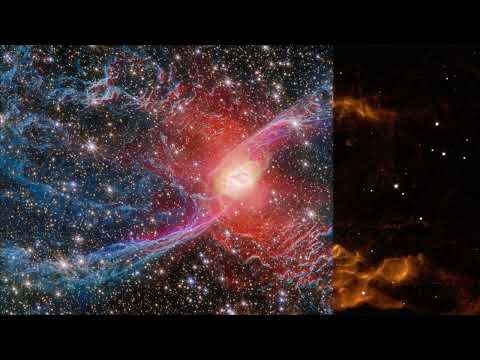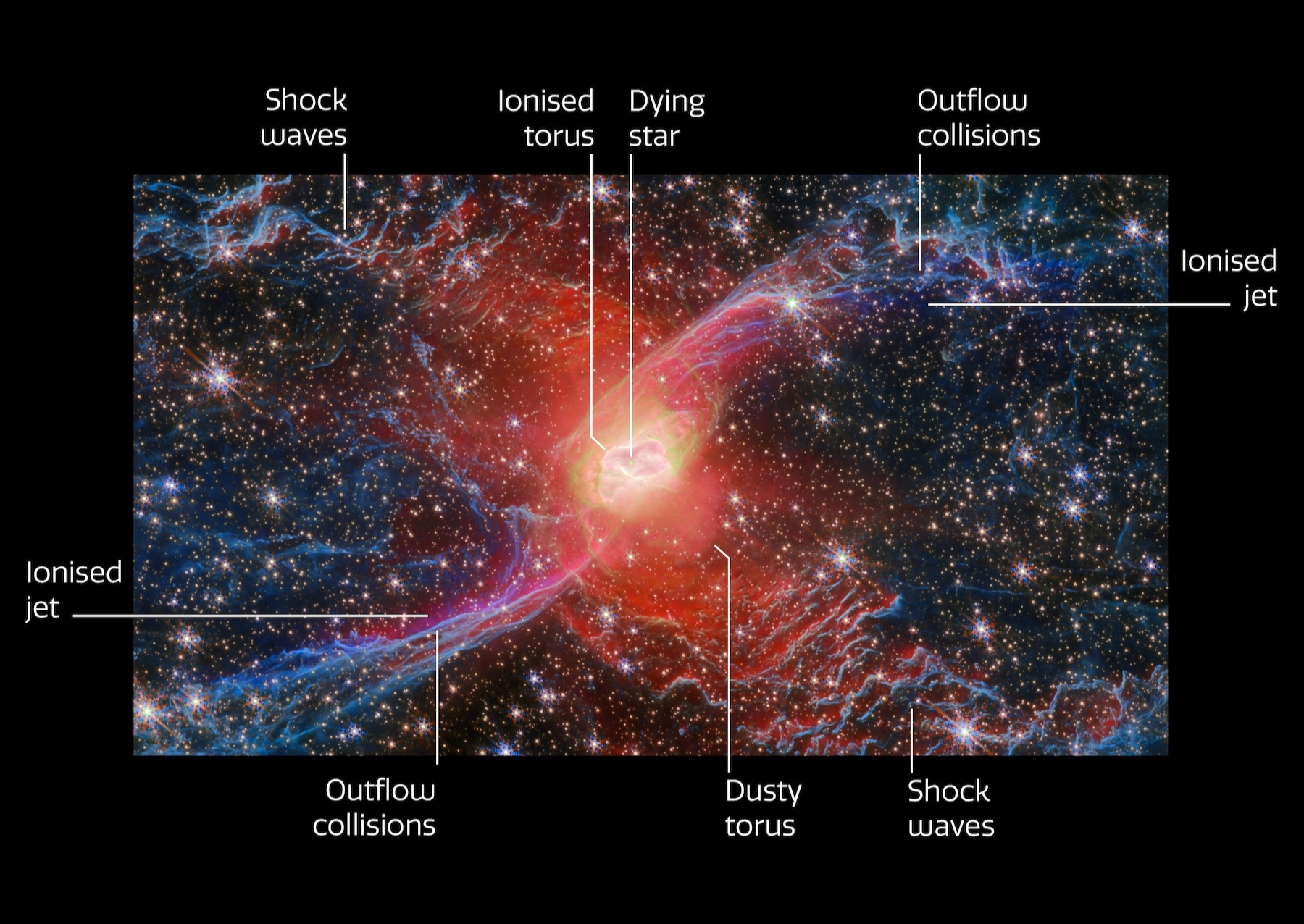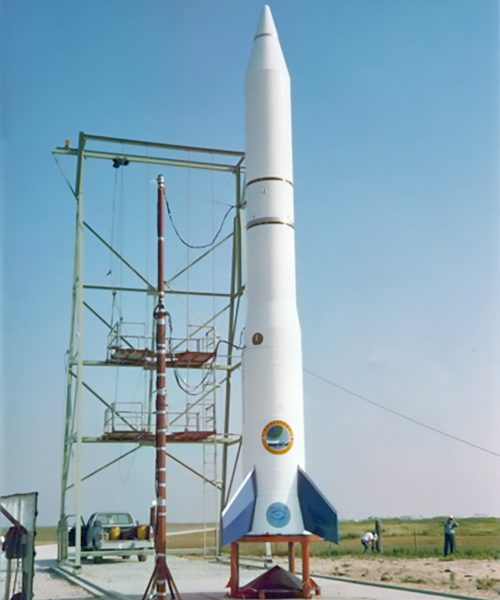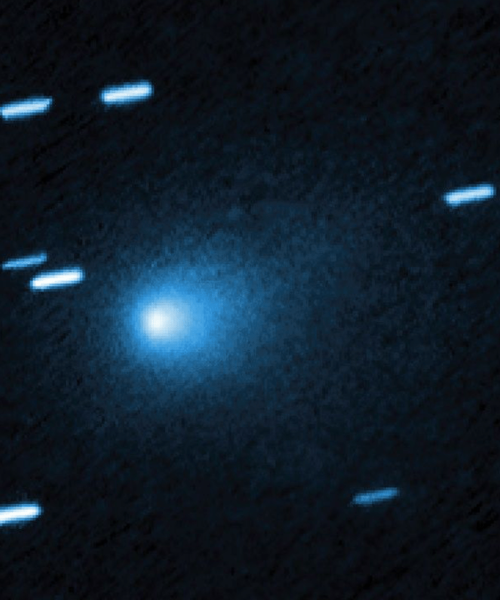A cosmic spider was caught in some kind of web. Specifically, the James Webb Space Telescope. The telescope’s sophisticated Near-InfraRed Camera (NIRCam) revealed some never-before-seen details of NGC 6537, aka the Red Spider Nebula. The image is detailed in a study published today in The Astrophysical Journal.
Planetary nebulae form when ordinary stars like our sun reach the end of their lifespan. After swelling into cool red giants, these stars will shed their outer layers, sending the debris flying into space. All that remains when those outer layers are gone is the star’s white-hot core. The ultraviolet light coming from the central star causes the glow. The planetary nebula phase of a star’s life only lasts a few tens of thousands of years–basically a blink of an eye in space terms.
The Red Spider Nebula is roughly 3,000 light-years away from Earth in the constellation Sagittarius. In this new image, the central star of the nebula is glowing just a bit brighter than the webs of dusty gas that surround it. The JWST’s NIRCam picked up the exceptionally hot and luminous central star. In previous images taken by the Hubble Space Telescope, the central star appears more faint and blue. However, the NIRCam images show it as a more detailed red, thanks to the camera’s sensitive near-infrared capabilities. The JWST has also spotted a shroud of hot dust surrounding the central star, which likely orbits the central star in a disc structure.

Music: Stellardrone – The Night Sky in Motion
According to the European Space Agency (ESA), while a single star is visible in the heart of the Red Spider Nebula, there could be a hidden companion star lurking nearby. A stellar companion like that could explain the nebula’s shape, including its narrow hourglass-like waist and wide outflows. This shape has been observed in other planetary nebulae such as the Butterfly Nebula.
This new view of the Red Spider Nebula reveals the full extent of its outstretched lobes for the first time. These lobes form the spider’s “legs” and are shown in blue. They are traced by the light emitted from H2 molecules, which have two hydrogen atoms bonded together. When looking closer at the lobes with the NIRCam, they appear to be closed, bubble-like structures that each extend about three light-years. Over thousands of years, outflowing gas from the center of the nebula has inflated these massive bubbles.

Gas is also getting out from the center of the nebula. The elongated purple ‘S’ shape centered on the heart of the nebula traces the light from ionized iron atoms. This feature shows where a fast-moving jet has burst forth from the nebula’s central star and collided with the material that was previously cast away by the star.
The observations used to create this image come from Webb GO programme #4571 (PI: J. Kastner) as part of a joint Chandra-JWST observing program.






